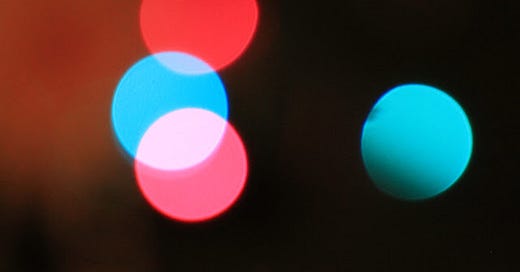In a remote countryside villa, three scholars, Thomas, Mark, and John, engaged in a lively philosophic debate concerning the core components of Illusionism. Mark and John were adamant Illusionists—Illusionists with respect to phenomenal consciousness. Thomas, on the other hand, wore no such label, and listened to the two men with intensity—occasionally sipping from his tea, his countenance unfazed and unpersuaded; he found his Illusionist friends to be neglectful of the logical consequences of their pet theory.
Clearing his throat, Thomas interrupted, “Gentlemen, if I may?” He reached into his pocket, producing a piece of chalk. With swift precision, he traced two large squares on the wooden floor and labeled them “Room 1” and “Room 2,” respectfully. Thomas gently escorted Mark into one of the squares, and then escorted John into the other. Satisfied with the setup, Thomas repositioned his armchair in the intervening space between the two rooms.
“Gentlemen,” Thomas began, “as self-professed Illusionists, you maintain that phenomenal properties do not exist—they exist neither as properties of objects, nor as properties of experiences. According to your view, although phenomenal properties do not exist, we are strongly inclined to believe that they do; and this impression of their existence is due to the nature of our introspective systems. To put it briefly, you allege that when we introspect or attend to something, we undergo all the same psychological effects that the awareness of phenomenal properties would cause in us if they existed as properties of what we were introspecting or as properties of what we were attending to (e.g., all the appropriate beliefs, desires, emotions, memories, associations, and so on). Am I correct in my statement of your position?”
Mark and John exchanged nods of agreement.
Thomas paused, reclined in his chair, and casually flipped through his copy of Illusionism: As a Theory of Consciousness. “Mark,” he asked, “which body is yours? Is it the body located in Room 1, or is it the body located in Room 2?”
With a puzzled look, Mark answered, “The body in Room 1, of course.”
Thomas continued, “And your body, John, where is it located? Room 1 or Room 2?”
Irritated, John responded, “Clearly, in Room 2.”
Thomas smiled, “Both of you are wrong.”
John’s eyes widened. “Excuse me?”
Mark echoed his sentiments. “This is nonsensical.”
Thomas raised a calming hand. “Allow me to explain. Mark, I am not denying that it seems to you that your body is located in Room 1. However, just because it seems to you that your body is located in Room 1, it does not mean that it is so. As a matter of fact, the body in Room 1—the body which you believe to be yours—is John’s body.”
Mark was speechless. A stunned silence ensued. John finally managed to utter, “But I feel the body in Room 2 as mine—how could it be Mark’s?”
“John,” Thomas added, “I know that it seems to you that you are embodied in the particular body located in Room 2. However, just because it seems to you that you are, does not mean that you actually are. As a matter of fact, the body in Room 2—the body which you believe to be yours—is Mark’s body.”
“What?” John interjected. “How can I be embodied in Room 1 when I cœnesthesically feel the body in Room 2 as being mine?”
“Exactly,” Mark echoed, “How can I be embodied in Room 2 if I cœnesthesically feel the body in Room 1 as being mine? If I seem to be embodied in a particular body—a body which I cœnesthesically feel as being mine—then I am embodied in it.”
Thomas, ever the patient teacher, responded, “Mark, as I said before, I know that it seems to you that your cœnesthesic sensations involve your being embodied in the particular body located in Room 1. Your impression of being embodied in that particular body—and not the body in Room 2—is due to your real body’s introspective mechanisms (i.e., the introspective mechanisms of the body in Room 2) misrepresenting your cœnesthesic sensations as involving the body in Room 1. It is for this reason, Mark, that when you attend to your cœnesthesic sensations (which are actually processes occurring in the body in Room 2), you undergo all the same psychological effects that you would undergo if your cœnesthesic sensations actually involved the body in Room 1. I’m surprised that you find this so disturbing. After all, the “illusion” of your being embodied in Room 1 is on par with your view that our introspective mechanisms misrepresent what we attend to as involving phenomenal properties, thus giving us the impression that phenomenal properties exist.”
Mark and John scoffed in disbelief.
Thomas walked over to the two men and erased the chalk marks. “Gentlemen,” he said, “I’m merely showing you the logical extension of your theory. By your own account, seeming doesn’t equate to reality. If we take your stance seriously, then the very introspective basis that informs us about what our cœnesthesic feelings of embodiment involve becomes questionable. If you deny the veracity of your introspective experience when it gives you the impression that things have phenomenal properties, you must be consistent and question what introspection tells you when it comes to what your cœnesthesic feelings of embodiment involve. You can’t have your cake and eat it too. If you are not cautious, you inadvertently undercut the basis for trusting any of your introspective experiences, including your fundamental sense of embodiment.”
With that, Thomas grabbed his coat, flung open the villa door, and disappeared into the golden glow of the afternoon, leaving Mark and John to ponder his words in the lingering silence.





